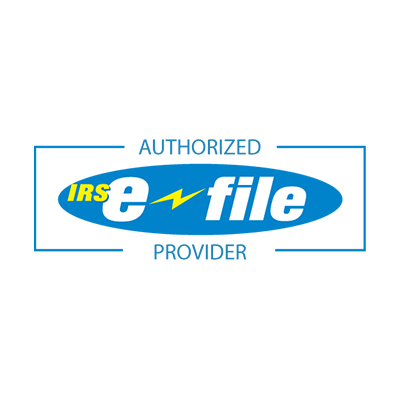When the IRS makes a mistake, it sometimes goes unnoticed, or it can be difficult to identify the root cause and clean up any resulting errors. Often, these mistakes are not human errors, but IRS computer system errors. This scenario becomes particularly critical in instances involving the 2290 penalty, where system errors can lead to significant consequences for taxpayers. Despite rigorous monitoring and multiple safety measures, feedback from users is essential in uncovering and addressing these issues.
That’s why when i2290 customers report an issue, we take it very seriously and investigate the reported problem thoroughly. We know that IRS e-file services are successful for our nation’s taxpayers only if the IRS e-file providers, like INSTANT 2290, contribute to its success.
Recently, several of our customers reported an issue with their tax payments after they e-filed their 2290 returns. This initial system bug resulted in several taxpayers incorrectly receiving a letter notifying them of a 2290 penalty and stating that they now had interest due. After several weeks of closely working with the IRS, i2290 was able to help them find and resolve these issues for all taxpayers who e-filed their Form 2290.
What Was the Issue?
In late October of 2023, two i2290 customers contacted our support team stating that their 2290 tax payments were not drafted after nearly two weeks from the date they had filed. The IRS processes all tax payments and does not provide visibility to i2290 or any other e-file provider on this matter, so we could not immediately pinpoint an issue.
As always, the IRS provided the Stamped Schedule 1s within minutes of filing in lieu of receiving payments within a few days, and they normally draft bank accounts within 1-3 business days after filing. Nonetheless, i2290 has routine validation for situations like this, and we were able to determine that the problem appeared to be with an IRS system.
In this case, IRS payment systems failed to draft tax payments from e-filed returns filed on two specific days in October. INSTANT 2290 reported the issue to the IRS and provided assistance in locating their issue. We immediately reached out to the IRS, who were responsive and began searching for the root cause of this system issue.
It would be after the last day of the month before the IRS discovered and rectified this tricky problem. This resulted in payments posting after due dates on some returns, and IRS systems automatically responded by generating letters to taxpayers showing they had a 2290 penalty and now had interest due.
After several weeks of collaboration with i2290 and performing an internal analysis, the IRS informed i2290 as follows: “Taxpayers impacted with these EFW payments [Electronic Funds Withdrawal] will receive a notice assessing penalties and interest in error. Taxpayers who have assessed penalties and interest will have them abated upon request based on this issue.”
INSTANT 2290 replied requesting the IRS take the action to reverse all invalid penalties rather than requiring taxpayers to request abatement; after all, this was caused by the IRS, not the taxpayers who filed on time.
While e-file providers do not have visibility into root causes with IRS system failures like this one, rest assured INSTANT 2290 will always invest our time and resources to ensure the IRS is aware of problems with e-file services, and to advise on fixes and remedies to taxpayers. It is simply the right thing to do, and everyone wins when any of us act as good citizens within our lines of business or communities. We are always pleased that taxpayers, the IRS, and all e-file providers gain value anytime we invest in the success of the entire e-file system. Yes, we are even pleased if it helps our competitors.
Did You Receive a Form 2290 Penalty?
Catching and remedying the original IRS system error created a new problem. When the tax payments finally processed, it was by that point early November. Other IRS systems were sending letters to the affected taxpayers, showing balances due. In some cases, taxpayers were also receiving notice of a Form 2290 penalty for failure to pay and interest for payments that were due by October 31st.
Some taxpayers who received these errant letters may have responded by mailing in these requested payments. This results in overpayment, which requires filing refund claim forms to receive a check from the IRS for the amount that has been overpaid.
Taxpayers who contacted i2290 about the discrepancy were advised not to send payments yet and to wait until we received more details from the IRS. In doing so, they avoided making double payments. Now that all has been made right with the IRS, these customers experienced no further issues.
The IRS located the accounts of affected taxpayers, removing penalties and interest that were applied in error. They are now sending corrected notices to those who have been affected.
Is E-Filing Still a Reliable Method?
That’s ultimately up for you to decide, but we still say yes. Error rates in paper-based systems are always much greater than those in their electronic counterparts. While errors do occur with computing systems, they are typically quite rare. Crucially, they’re also much easier to trace and repair than paper transactions.
Because the taxpayers in this most recent incident filed electronically, i2290 had an accurate and detailed audit trail to help the IRS resolve their system issue quickly. We were ready with the information the IRS needed to isolate the issue and repair it. The occurrences of errors in filing paper transactions, on the other hand, tend to be much greater and difficult to repair.
The IRS processes an unimaginable number of transactions for our nation’s treasury, and human nature is to pinpoint failure without considering the billions of transactions that go perfectly. Let’s all catch people and organizations doing things right rather than doing them wrong! We should celebrate moments of professionalism like this one, where analysts at the IRS located a problematic needle in an enormous haystack, eliminated it, and then managed the fallout, as well.
I2290 is Committed to Providing a Good E-File Experience for Everyone
In order to do right by our customers, i2990 is aware that we must bring value to the entire e-file system—even our competitors! No matter what service a taxpayer may choose, we want everybody to have a positive, productive experience with IRS e-file.
Taxes can be difficult and frustrating, but the process to file and pay them should be easy, painless, and fast. Many businesses that operate heavy commercial vehicles struggle to get accurate stamped Schedule 1s easily. That’s why INSTANT 2290 created the world’s simplest, fastest way to e-file the IRS Form 2290 and get your Stamped Schedule 1 in minutes. That way, you can quickly get back to what you do best and have the peace of mind that this task is done, and done right.
We at i2290 can only directly control the experience of our customers, but we hope for excellent, stress-free experiences for everyone else, too! That’s why we’re so dedicated to being a good and helpful citizen in the universe of IRS e-file options, and will continue to take an active role in its success.
I2290 will continue to devote ourselves to providing a fast and easy way for taxpayers to file Form 2290 and pay their Heavy Vehicle Use Tax. The trucking industry is vital to continuing operations all over the globe and we will continue to work every day to champion truckers, the industry, and to make your lives a little easier.
Ready for a simple, reliable Form 2290 e-filing process? Create an account with i2290 today!
Special note: This article is for general purposes, and is not intended to provide, and should not be relied on for tax, legal, investment, or accounting advice. The best way to ensure you’re properly filing and paying appropriate taxes is by following IRS regulations and consulting with a tax professional.


